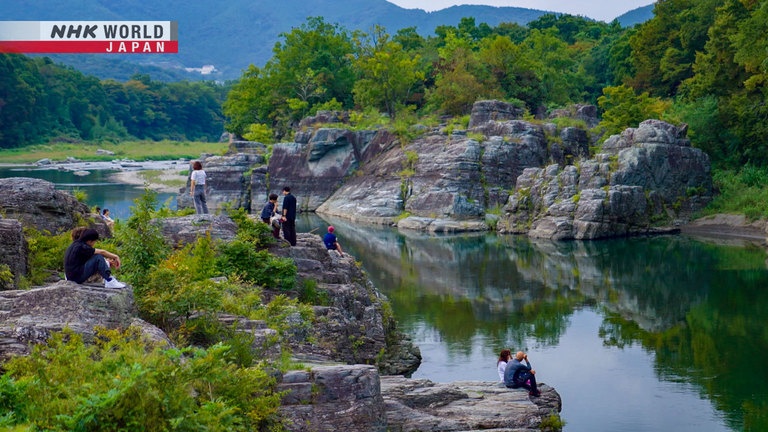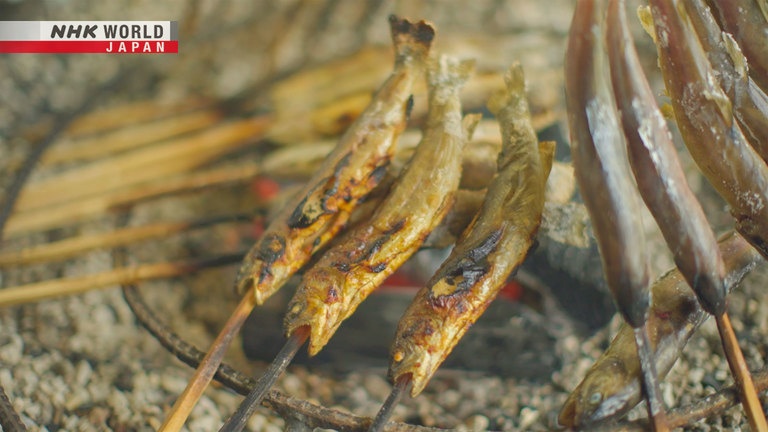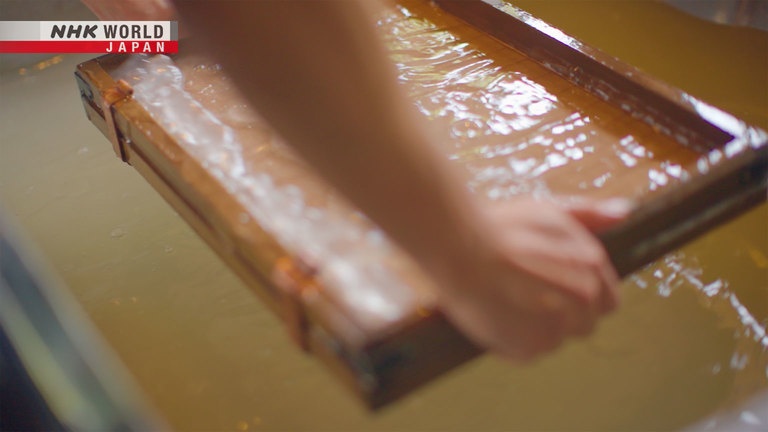SAITAMA
Let's take a drive in Saitama Prefecture and discover its natural beauty and hidden gems. From Omiya, we head to Chichibu to see its famed SL train. En route, we savor local dishes and try washi paper crafting.




Transcript
If you wish to really see Japan, get behind the wheel.
Notable places and interesting people are waiting just off the beaten path.
Today we're in Saitama, north of Tokyo.
From Omiya we'll head for Chichibu, a region which receives eight million visitors a year.
Saitama is one of Japan's smaller prefectures, comprised of 63 municipal units.
Full of picturesque, historic towns, it's famous for local culture and scenery.
So, start your engine.
Saitama is waiting.
Let's hit the road.
Welcome! I'm your navigation system.
I'll help you find the best things to see and do.
Chichibu is two hours west of Omiya.
But, since you're here, why not take the time to see more of what Saitama has to offer?
So let's head north!
Saitama is an agricultural powerhouse.
You'll find plenty to sample.
We'll take the expressway from the Iwatsuki Interchange.
Our first destination is Kazo.
The one-hour drive will take us through four other towns too.
Like the cities of Saitama, Hasuda, Shiraoka, and Kuki.
Saitama's towns have roots in the post stations that stood along highways during the 17th to 19th centuries.
There was lots of traffic up and down the Nakasendo and Nikko Kaido.
Here's Kazo.
Let's exit the expressway.
Looks like autumn is setting in here nicely.
Look at that rice, begging to be harvested.
This area is known as Saitama's granary.
And we'll soon see why.
The Tonegawa River.
With ample water and good soil, this area is a cornucopia of agricultural products.
Why not check them out?
There's a "michinoeki" close by. Let's stop in.
Here we are. Go have some fun!
"This michinoeki opened in 1998."
"Hyacinth bloom in old rice paddies."
"Grab some fresh produce!"
"Vegetables from this morning's fields."
"The shop is decorated with
sketches of the growers."
This is Manganji red pepper.
It's not hot.
It goes with anything,
even tempura.
We get a lot in early autumn.
"This eatery is famous for
two types of noodles."
"One is handmade soba buckwheat noodles."
"Kazo is a big buckwheat producer."
We start with unhulled buckwheat,
dehull the grain and polish it.
We handle every production step
to guarantee the best flavor.
Word got around
that our noodles are delicious.
We have to work hard
to meet the demand.
"Cold buckwheat noodles."
"They're making another noodle out back."
I'm making udon noodles.
Kazo is famous for them.
I can't move my feet fast
like the young people.
So I use my weight,
to tell the truth.
"Saitama is Japan's 2nd-largest udon producer."
"It's served in a unique regional style."
"Thin-sliced local vegetables for garnish."
"Miso sesame sauce."
"Cold udon with dipping sauce."
Did you like the noodles?
Kazo udon has been around for 300 years.
The temple on the right has a deep connection with udon.
Hundreds of years ago, the temple started offering free noodles to hungry visitors.
They say that's how Kazo udon got its start.
After that, noodle shop after noodle shop sprang up.
Today Kazo has more than forty shops serving the hearty noodle.
We'll pass through three more cities as we head for the next "michinoeki."
We're about to enter the town of Gyoda.
The municipality claims that the name Saitama originated here.
Notice that sign? Sakitama was likely the original name from which "Saitama" was derived.
On the left, you can see the shrine linked to the prefecture's heritage.
Sakitama Shrine has a history of over a thousand years.
The name Sakitama is said to symbolize a divine gift of fortune.
With mountains rising left and right, we're nearing the village of Higashi-Chichibu.
This area is known for its pure mountain waters.
And here's the "michinoeki."
Go on, check out the local specialties the pure water makes possible.
"This michinoeki opened in 2016."
"There's a Japanese garden for strolling."
"This historic residence is
a Tangible Cultural Property."
"Washi paper being made
the old-fashioned way."
Paper is made of plant fibers.
The fibers are distributed
vertically and horizontally.
It makes the paper strong
and hard to tear.
"This paper is made from the 'kozo' bush."
The strands are washed thoroughly.
"Chichibu is a historic paper-making area."
The "kozo" is abundant
and the water is pure.
Papermaking used to be winter work.
Winters here are sunny,
so the paper dries quickly.
The climate is perfect for making paper.
"Try it yourself."
"That was fun!"
"A lineup of local cuisine
waits at the food court."
"The grilled fish are a must-try."
Yum.
Careful!
These are "iwana," a kind of trout.
They live in pure, cold streams.
"Grilled Iwana."
"Fresh-caught this morning."
The flesh is sweet.
You can eat everything,
from head to tail.
We raise them right here.
I can let you take a special look,
if you'd like.
"The fish thrive in cold, pure water."
Few places have the water
to raise fish like this.
They need a special environment.
They're a gift from the mountain.
A symbol of Chichibu's abundance.
How did it go? Did you like the grilled "iwana"?
We cross the mountains and head for the town of Chichibu.
Listen. Do you hear that?
It's a steam locomotive.
It's a big hit with weekend tourists and holidaymakers.
The Chichibu Railway has been operating for over a century.
One of its jobs is to haul a certain cargo.
The cargo comes from that mountain.
Mt. Buko is a symbol of Chichibu.
The white face of the mountain is a limestone quarry for cement.
Limestone forms in coral reefs.
Seeing it on the side of a mountain reminds you of just how old the planet is.
Chichibu town features another window into the Earth's history.
Let's make it the last stop on our journey.
We're almost there. This geopark is a popular tourist spot.
Our journey has taken four hours. We covered 135 kilometers.
Until our next adventure, goodbye for now!
"These exposed rock sheets are
66 to 85 million years old."
"Explore ancient rock formations
in this geopark."